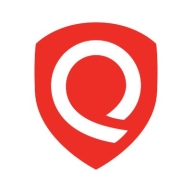

Qualys VMDR and ServiceNow Discovery compete in the IT management and security sector. Qualys VMDR appears to have the upper hand in vulnerability management due to its comprehensive toolset and effective risk reduction capabilities.
Features: Qualys VMDR provides robust tools for vulnerability management, continuous monitoring, and cloud-based scalability. ServiceNow Discovery offers enhancements in IT operations management through dependency mapping and service integration.
Room for Improvement: Qualys VMDR could improve by reducing false positives, addressing cloud storage issues, and simplifying user integration with systems like ServiceNow. ServiceNow Discovery users seek easier service mapping, lower costs, and enhanced discovery patterns and reporting functionalities.
Ease of Deployment and Customer Service: Qualys VMDR is flexible across multiple cloud environments but faces mixed user reviews regarding customer service responsiveness. ServiceNow Discovery supports cloud and on-premises deployments with great customer service despite initial setup complexities.
Pricing and ROI: Qualys VMDR offers competitive pricing compared to Tenable and provides good ROI through risk management. ServiceNow Discovery is considered expensive due to its node-based licensing but delivers notable ROI with its features that enhance IT operations.
We saw a return on investment through significant savings in time, money, and resources.
We usually get on calls with tech support, and they are very helpful.
The response time takes a while.
The technical support provided by Qualys is pretty good.
The 'follow the sun' model, where the time of raising the ticket and where it lands, plays a crucial role.
This rating is because there are features on the tool that never worked and despite calling our support, there were no results.
Scalability depends on the license and the number of assets being monitored.
Qualys VMDR can handle scalability, although increasing the inventory can raise the licensing costs.
Qualys VMDR's scalability is good, and the customer support is good.
I would rate it as a nine on a scale of one to ten, indicating it is highly scalable.
Small companies will not be able to afford ServiceNow Discovery from the pricing perspective.
It receives this rating because it can be difficult to troubleshoot when the discovery is failing.
Qualys VMDR is stable.
I would rate the stability of ServiceNow Discovery as nine, as we never had downtime.
That is not a mistake of the product. It is due to excessive security on the network.
It does not automate patching unless the patch management module is purchased separately.
If AI features were integrated, it could enhance the capabilities significantly.
One area where Qualys VMDR can be improved is the missing feature for deploying agents for over 1,000 assets, as we need to do it manually.
ServiceNow ITOM is particularly not very strong in terms of monitoring capabilities. They do not have any monitoring tool.
Improvements could include implementing chatbots to simplify ticket creation.
The areas of ServiceNow Discovery that have room for improvement are getting custom reports on the relationship between CIs that are not on the same table.
I would rate the pricing between seven to eight out of ten.
I have a notion that Qualys might be more expensive than Rapid7.
Qualys offers better pricing and is feature-packed compared to other tools.
ServiceNow is considered more expensive compared to other products.
I think the price of ServiceNow Discovery is cheaper than BMC.
The prioritization of vulnerabilities has improved our remediation efforts by around thirty to thirty-five percent.
It impacts my workflow overall, with the patch management features as it has the missing patches listed in detail, making it easier to get a comprehensive report and providing some dashboards that offer visual representation.
Qualys VMDR offers a one-stop solution for monitoring and reporting.
The workflows are beneficial as they allow tasks to be assigned to respective teams without the need for coding.
ServiceNow Discovery helps with operations, audits, and allows people to assess how a particular change in infrastructure impacts other components.
ServiceNow Discovery has normal discovery of CIs, as well as horizontal discovery for understanding Service Mapping.
| Product | Market Share (%) |
|---|---|
| ServiceNow Discovery | 5.4% |
| Qualys VMDR | 2.9% |
| Other | 91.7% |


| Company Size | Count |
|---|---|
| Small Business | 20 |
| Midsize Enterprise | 12 |
| Large Enterprise | 69 |
| Company Size | Count |
|---|---|
| Small Business | 16 |
| Midsize Enterprise | 5 |
| Large Enterprise | 23 |
Vulnerability Management, Detection, and Response (VMDR) is a cornerstone product of the Qualys TruRisk Platform and a global leader in the enterprise-grade vulnerability management (VM) vendor space. With VMDR, enterprises are empowered with visibility and insight into cyber risk exposure - making it easy to prioritize vulnerabilities, assets, or groups of assets based on business risk. Security teams can take action to mitigate risk, helping the business measure their actual risk exposure over time.
Qualys VMDR offers an all-inclusive risk-based vulnerability management solution to prioritize vulnerabilities and assets based on risk and business criticality. VMDR seamlessly integrates with configuration management databases (CMDB), Qualys Patch Management, Custom Assessment and Remediation (CAR), Qualys TotalCloud and other Qualys and non-Qualys solutions to facilitate vulnerability detection and remediation across the entire enterprise.
With VMDR, users are empowered with actionable risk insights that translate vulnerabilities and exploits into optimized remediation actions based on business impact. Qualys customers can now aggregate and orchestrate data from the Qualys Threat Library, 25+ threat intelligence feeds, and third-party security and IT solutions, empowering organizations to measure, communicate, and eliminate risk across on-premises, hybrid, and cloud environments.
ServiceNow Discovery finds applications and devices on your network, and then updates the CMDB with the information it finds. Discovery is available as a separate subscription from the rest of the Now Platform.
We monitor all IT Asset Management reviews to prevent fraudulent reviews and keep review quality high. We do not post reviews by company employees or direct competitors. We validate each review for authenticity via cross-reference with LinkedIn, and personal follow-up with the reviewer when necessary.